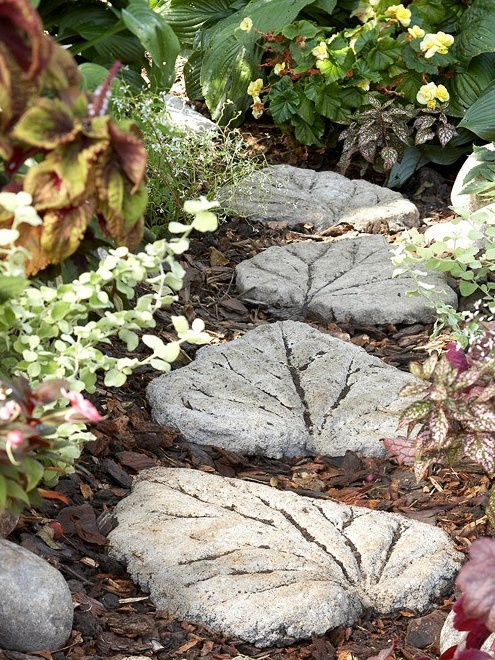
Country the site is the place where we not only work, but also relax. Rest as well as possible contribute to the nature and aesthetic design of the site. Why not even fit such a trifle as a garden path into the natural beauty?
Materials and tools:
1. A wide and large leaf of rhubarb, burdock
2. Fine brown gravel
3. Coarse gravel sand
4. Bag of cement
5. Water
6. Small garden shovel
7. Gloves
8. Cloth bag or piece thereof
9. Wand or pencil
10. Tank for mixing cement.
Operating procedure:
A leaf of burdock or rhubarb should be applied to the ground and carefully dig a hole along the contour. This stage does not take much time. Gloves are recommended in advance.
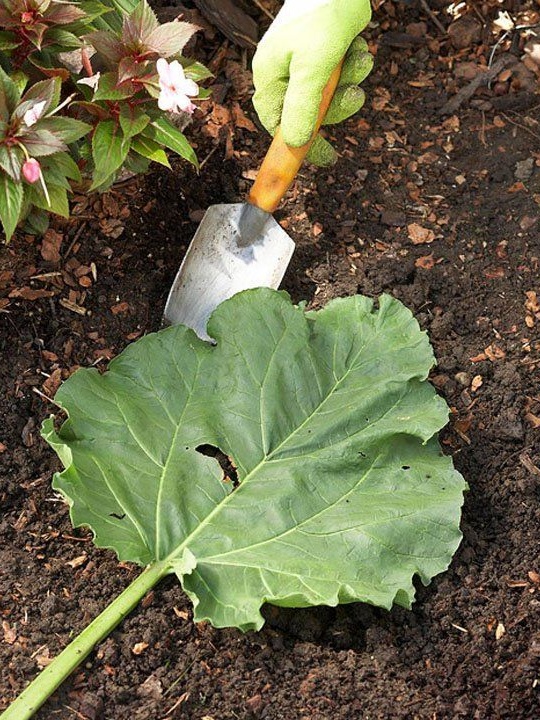
A small amount of gravel is poured into the hole. Then sand is sprinkled on top. Thus, the foundation is formed for a homemade leaf. Due to the fact that gravel is different in color from the ground, in the process of work it will be easy to distinguish the outlines of the future crafts.

Now you can take on the manufacture of the track element directly. To do this, cement is poured into a container such as a cart, basin or bucket. The main requirement for capacity is large capacity. Water is poured into the cement, everything is mixed.
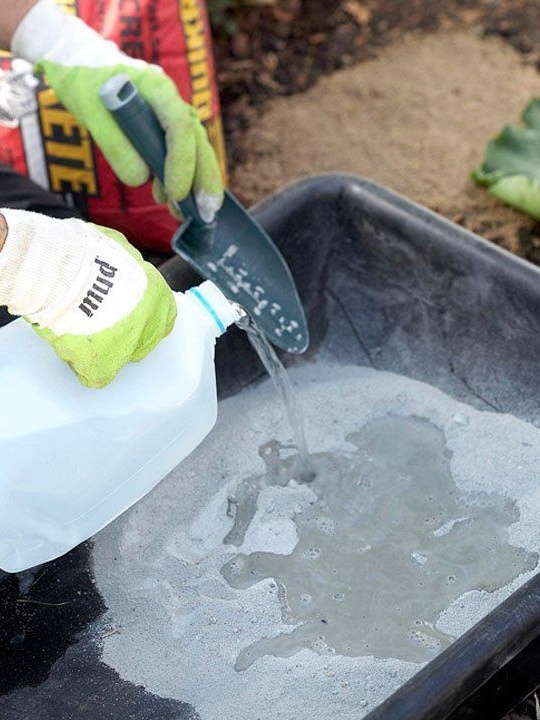
The moment of mixing the solution should be highlighted separately. It should turn out to be of a certain consistency - in no case jelly-like and not liquid, otherwise the path will not keep its shape, spreading out in all directions. The best condition is like a dough. The process of kneading should resemble the modeling of cakes.
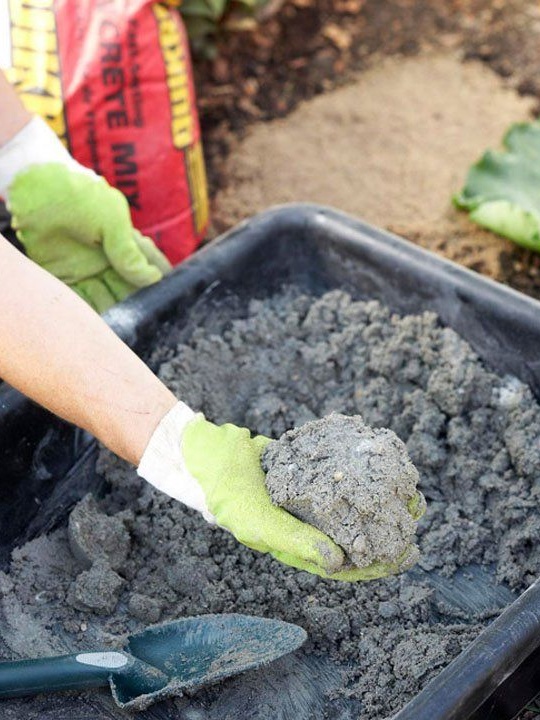
Once the cement has reached the required state, you can begin to form a path from it. To do this, take the amount that is necessary depending on the size of the leaf, and put it on a sand-gravel base. Do not be afraid to crush the material with strength - you need a dense texture. Excessive material savings can adversely affect the final appearance. homemade.
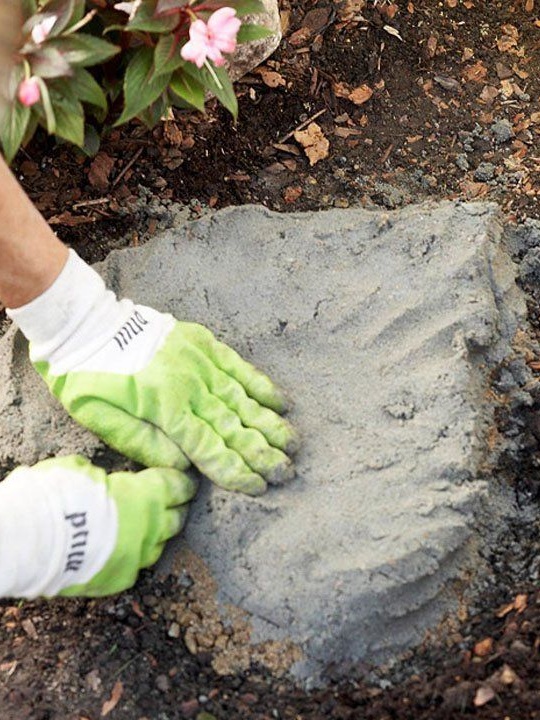
Until the cement has frozen, it is necessary to form veins.To make them natural, you should take a real leaf and press it denser to the cement counterpart. The vein pattern should print at least a little. However, to overdo it is also undesirable, otherwise a non-frozen home-made leaf from excessive pressure may fall apart. As soon as the print is received, the real sheet is removed, and a pencil or stick draws a sharper line on the hardening solution.
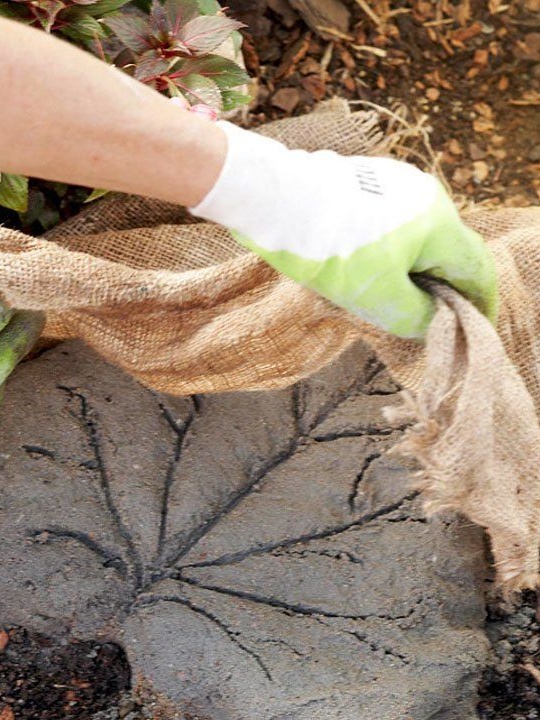
The final touch remained in the formation of the craft - a piece of the fabric bag is slightly wetted with ordinary water, squeezed and applied to the cement sheet. It must be left in this state for a couple of days for the final solidification and achievement of stone hardness.
After solidification, the leaf can be removed from the pit and placed where you want. A similar procedure is carried out for the remaining crafts.
In a similar simple way, you can create a garden path that will delight with its appearance. Quite unusual, it organically fits into the atmosphere of any site.
